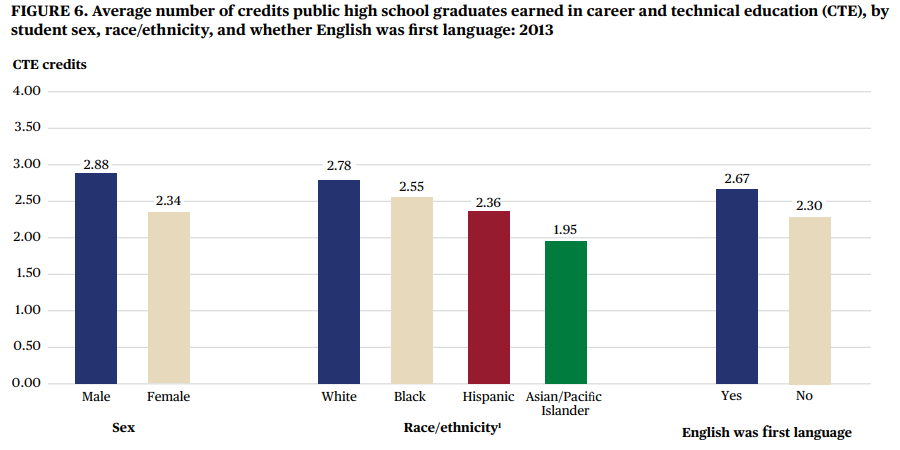![]() Eighty-eight percent of high school graduates earned Career Technical Education (CTE) course credit in 2013. That’s the major takeaway from a new data brief published by the National Center for Education Statistics (NCES). The data brief provides a glimpse into how course taking patterns have changed over time and how participation in CTE varies by race, ethnicity, gender, disability and English learner status.
Eighty-eight percent of high school graduates earned Career Technical Education (CTE) course credit in 2013. That’s the major takeaway from a new data brief published by the National Center for Education Statistics (NCES). The data brief provides a glimpse into how course taking patterns have changed over time and how participation in CTE varies by race, ethnicity, gender, disability and English learner status.
While states publicly report information on CTE participation, concentration and performance, the methods states use to identify CTE concentrators and categorize programs can differ, making an apples-to-apples comparison across states and over time challenging. The data brief from NCES cuts through some of the noise by coding student transcripts using the School Courses for the Exchange of Data (SCED) and Secondary School Course Taxonomy (SSCT) codes. The research uses comparative longitudinal data from the National Education Longitudinal Study of 1988, the Education Longitudinal Study of 2002 and the High School Longitudinal Study of 2009.
CTE Course Taking Is the Norm for High School Graduates in the U.S.
The major finding from the research is that CTE course taking is the norm for high school graduates in the U.S. However, while 88 percent of high school students graduate with some CTE credit, this has declined from 95 percent in 1992. The most popular subject area is business, finance and marketing.
Additionally, high school students are more likely to sample CTE courses as elective credits than concentrate in a specific program. Approximately two in five high school students graduated with at least two credits in a specific CTE area, and only one in five completed at least three aligned CTE credits.
Equity Gaps Remain
The data brief also illuminates disparities in CTE course taking by subgroup. For decades, CTE — historically called “vocational education” — prepared learners who were determined not to be “college material” for dead-end jobs after high school. Overwhelmingly, learners of color and learners from low-income families were tracked into these programs and shut out from the opportunity for postsecondary education and a pathway to career success.

Tracking continues to take place in some schools across the country today, but as CTE has strengthened in quality and rigor, access to high-quality CTE programs in some cases have been closed off to learners from diverse backgrounds through “gatekeeping” practices such as the use of admissions requirements or the placement of programs in affluent communities.
According to the NCES data brief, learners with an Individualized Education Plan (IEP) and learners whose parents had lower levels of education earned more CTE credits than their peers. Conversely, the report found lower levels of CTE course taking among English learners, female learners and learners of color compared to learners whose first language was English, male learners and White learners respectively.
Unfortunately, the report does not include information about program enrollment by subgroup or the quality and rigor of different programs, which would illuminate whether these patterns are cause for concern or celebration. Under enrollment could be an indication of gatekeeping policies and practices, just as over enrollment could be an indication of tracking.
The data brief from NCES illuminates a trend, but more investigation is needed to understand whether there are disparities by discipline or quality of the program and to what degree course taking patterns result from specific policies or practices at the state or local level.
Austin Estes, Manager of Data & Research
